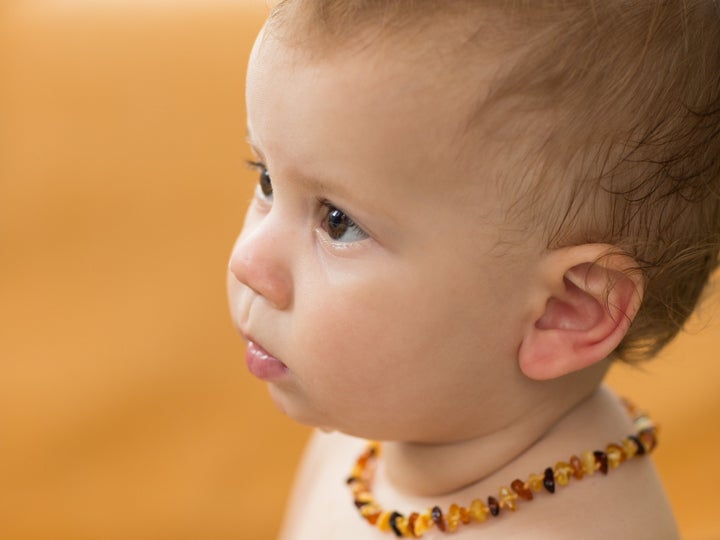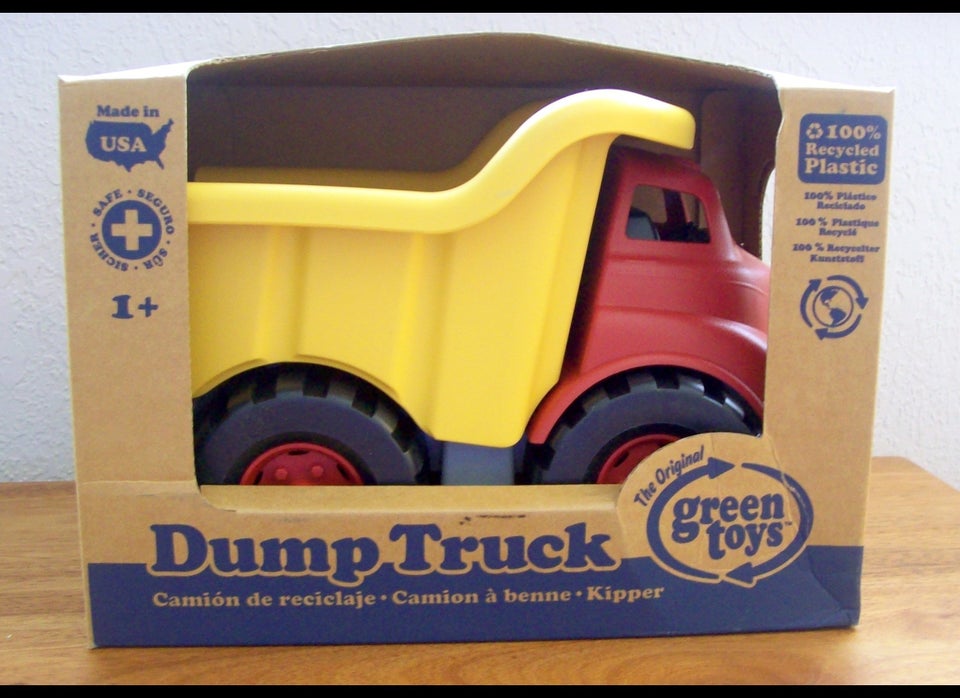The U.S. Food and Drug Administration issued a warning Thursday about the risk teething necklaces pose to babies and toddlers.
The jewelry — including necklaces and bracelets worn by babies who are teething, or used as sensory stimulation for children with autism or attention-deficit/hyperactivity disorder — has been known to seriously injure or kill children, the FDA said in a statement directed at parents, caregivers and health care providers.
Necklaces, bracelets and anklets pose strangulation risks, and if the string breaks, children can swallow beads and choke on them.
Reports included an 18-month-old toddler who died after being strangled by his amber teething necklace while sleeping, the FDA said. A 7-month-old baby reportedly choked on the beads of a wooden teething bracelet and had to be taken to the hospital.
“We’re concerned about the risks we’ve observed with these products and want parents to be aware that teething jewelry puts children, including those with special needs, at risk of serious injury and death,” FDA Commissioner Scott Gottlieb, M.D., said in a statement.
The beads of teething jewelry may be made of silicone, wood, or other materials, including amber. The manufacturers of amber teething necklaces claim that a baby’s body temperature warms the amber, releasing a pain-relieving chemical that can be absorbed through their skin to relieve teething pain.
And indeed, that chemical, called succinate or succinic acid, has been shown to have some therapeutic benefits. But the FDA has not tested the necklace manufacturers’ claims for safety or effectiveness.

Dr. Jaime Friedman, a San Diego-based pediatrician, praised the FDA for issuing the warning. Friedman says that parents rarely ask for her advice on these teething necklaces before they buy one for their baby, but she frequently sees patients wearing them during appointments.
Friedman makes it a point to counsel caregivers away from using them by bringing up choking and strangulation risks, as well as the unknown effects about the amber itself.
“I have not, as of yet, seen that there’s any evidence of [succinic] acid in the bloodstream,” she said. “Even if you do have this acid in the bloodstream, do we know what it’s doing? No, I don’t think we do.”
Friedman, who is an official spokeswoman for the American Academy of Pediatrics and affiliated with Children’s Primary Care Medical Group, said that if parents insist on using the necklaces, she advises them to not let babies wear them unsupervised. That means no jewelry while they sleep, or while sitting in a car seat if an adult can’t see them.
“I guess it’s unsolicited advice, but hey, that’s my job right? To protect kids,” she said. “So I’m going to keep doing it.”
The FDA has taken a strong stance against other at-home teething pain remedies, including numbing gels or creams for gums, as well as homeopathic teething tablets that were found to contain belladonna, a poisonous plant that can be dangerous to people.
The American Academy of Pediatrics recommends that caregivers give their babies a teething ring that has been chilled in the fridge to numb the pain. However, it warns against freezing teething rings, as frozen rings can damage gums. Another safe option for caregivers would be for them to use a clean finger to gently rub or massage their baby’s gums.
If you know of children who have been injured from teething jewelry, the FDA welcomes reports about what happened at 1-800-FDA-1088 or online at their adverse event reporting site.

